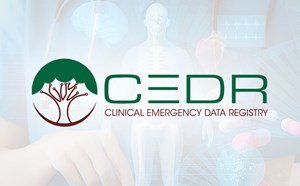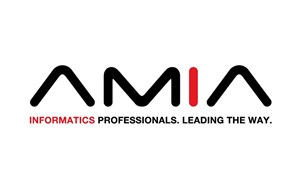
Journey of a Technologist form Academia to Industry
Two roads diverged in a wood, and I — I took the one less traveled by, and that has made all the difference.
- Robert Frost
The arduous path to become an Emergency Medicine physician takes eight years of higher-level education and then at least three years of intensive residency training. This time invariably exposes us to a variety of academic settings. The abundance of mentors understandably guide students through the steps to becoming a cerebral researcher or a well-rounded clinician ready to stabilize and treat the most dire patient presentations. However, these skills and this clinical knowledge can serve so many other valuable purposes. So what about other career paths that can serve clinicians and patients across entire populations?
History
I grew up with a fascination around the potential of computers. My mom recalls as a child how I had a friend come over to only send him home so that we could play a computer game over the internet. This was the mid-1990s and the internet was synonymous with the “You’ve Got Mail!” sounds of America Online (AOL). I was building my own computers from spare parts and taking computer science courses that taught foundational programming principals like conditional logic and recursion. One summer while some of my high school colleagues were on vacation with their families, I constructed an MP3 player in my car with a desktop computer holding my music library in the trunk and running cables to the dashboard to manipulate a programmable LCD screen. The creative potential of computer technology seemed limitless and the exuberance of the dot-com boom showed that others felt the same.
I pursued Economics and the sciences in college in the wake of the dot-com bust. However, I continued to tinker with programming via websites that I commercialized to help fund my education. I was drawn to medical school for a variety of reasons, but ultimately thought that I could bring a unique perspective to the field. Not all on the interview trail saw the value at the time. I only wonder if some of these skeptical interviewers would have a different perspective nowadays after working a shift bombarded with dozens of interruptive poorly-designed alerts. The year after starting medical school, the government passed the HITECH Act which fueled the enormous growth in electronic health record (EHR) systems around the country. With the writing on the wall regarding the pitfalls of rapidly deployed technology, the Accreditation Council for Graduate Medical Education (ACGME) approved Clinical Informatics as a recognized subspecialty the year before I finished residency.1 I jumped at the opportunity and became one of the first Clinical Informatics fellows trained in an ACGME-approved program.
Clinical Informatics Fellowship
I enrolled in a Clinical Informatics fellowship at Children’s Hospital of Philadelphia (CHOP). I will preface this by saying I am not a pediatrician, though I repeatedly remind my colleagues there that we emergency physicians are comfortable with pediatric patients! I applied with the particular desire to learn about EHR interoperability, but felt like a sponge ready to take in the entire field.
The training model for Clinical Informatics fellowship programs is still evolving, but it doesn’t follow the traditional model of rounding, treating, and coordinating care for individual patients. Instead, the first year focused on rotations like: inpatient, ambulatory, acute care, clinical decision support (CDS), and data analytics. In these rotations, you engage in ongoing projects and play a role in being the physician liaison between the information technology (IT) stakeholders and clinical end-users. Along the way, fellows had the opportunity to engage in longitudinal projects that could support our long-term career goals. For me, that entailed learning about interoperable standards and emerging technologies that could enable EHR-embedded software applications.
Ingredients for Innovation
I had pursued a variety of programming projects in medical school and residency. These included a scheduling tool for emergency medicine students doing their rotations and also a tablet computer for waiting emergency patients to keep them apprised of the status of their care course. None of them gained traction, but I didn’t have the opportunity to dwell on their lackluster adoption at the time. More recently, I was asked to present my thoughts on the topic.2 To nurture innovation in the academic setting, I hypothesize that there are three important prerequisites: time, institutional infrastructure, and mentorship.
Time
Medical school and residency are not thought of as time where students have an abundance of time to tinker. There are windows and some trainees achieve amazing feats, but exploration is extremely difficult. The Clinical Informatics fellowship provided time to experiment via electives, but even within the dedicated rotations. On my CDS rotation, my co-fellow and I submitted a proposal to a Health 2.0 challenge that asked for ideas on how to bridge the gap between public health and frontline providers. We developed a prototype for a cloud-based rule repository that could be maintained by the local Philadelphia Public Health Department. This way, we could have the EHR call against this remote repository using the newest interoperability standards and fire alerts based on public health crises that may be rapidly evolving and difficult for local IT teams to maintain. This innovation ended up winning the Health 2.0 challenge and, subsequently, was a finalist in a Department of Health and Human Services challenge as well.3-4 This experience brought in tens of thousands of dollars to our informatics department and fueled my research interests.
Institutional Infrastructure
The infrastructure in place to support ideas is integral for nurturing early ideas. While funding is invariably part of this equation, the culture and leadership play an important role. During residency as an example, there was no established path for opening up the EHR to me as a tinkerer. However, the Clinical Informatics fellowship program revolved around opening doors for experimentation. This included dedicated EHR testing environments to play with, opening the doors to robust data repositories to hone our SQL skills, and access to senior IT leadership who were receptive to adopting new technologies. Beyond opening doors, CHOP developed an internal accelerator program through their technology transfer office to support promising ideas. My CDS initiatives caught the eye of this group and I started working with more business and operational minded stakeholders there. This program taught iterative design principles and encouraged interviewing end-users. This structured guidance led to a pivot from remote CDS to helping the health system analyze their internal alert build and managing the governance around it. This formed the core product of my current venture.5
Mentorship
The leadership at CHOP was extremely supportive of my interests and began to provide some mentorship outside of the traditional model of clinical medicine and research. Two of my mentors were directly involved with software technology that was spun-out of the organization. They could speak to hiring, intellectual property negotiations, funding requirements, and other topics that I otherwise didn’t have experience with. Furthermore, the technology transfer office also worked to introduce me to potential team members and investors. As CHOP had spun out previous software ventures, there was also a network of companies and clinicians that I could connect with to advise on potential landmines ahead. It is hard to emphasize how many new, but interesting learnings there are when exploring an entrepreneurial spin-out from an academic setting. It’s clearly a more risky career path, but it’s definitely possible with guidance from mentors and, of course, support from family and friends.
Out of the Nest
My work at CHOP expanded to a point that a funding source was needed for further growth. The traditional research model relies on grant funding. The limits of this model for an operational tool are immediately clear:
- The ability to attract scarce high-quality talent invariably requires high salaries or forward-looking benefits packages that include equity. Additionally, equity aligns incentives around success which is important for the early success of a product. High salaries and equity are components that academia simply cannot offer.
- Academic colleagues releasing open-source software have lamented to me about extremely poor adoption. Outward facing teams are required to evangelize the value of a tool that academia is simply not built to continuously support. This goes well beyond the dreaded traditional sales representative, but includes developing a strategy to create value for end-users and establishing relationships with these external stakeholders that may be struggling to efficiently perform their operational jobs.
- Adoption of a technology is the first step in spreading value. However, ongoing maintenance and ensuring success is the more important piece. It would be difficult to find a grant that would allow for the ongoing justification of hiring a growing internal staff that not only provides technical support, but also operational support to external facing stakeholders.
With the mentorship of several advisors who are involved with spin-out companies, I ultimately decided to leave my academic position as a researcher and continue the journey as an independent entity. This doesn’t mean the end of traditional academic pursuits, but it does mean the transition to a less-traveled path.
Conclusion
I continue my clinical practice as Adjunct Emergency Medicine Faculty at the University of Pennsylvania and also engage in ongoing research pursuits with my colleagues at CHOP.6-7 However, I explore this novel path and mentor others now on my journey and the possibilities beyond the exclusive practice of clinical medicine or research. I hope my story nudges others who are sitting on the fence to explore their passions as well. Our capabilities as emergency physicians and clinical informaticists can serve our patients and colleagues in many ways beyond the walls of the emergency department or your local health system.
References
- Clinical Informatics Fellowship Programs. AMIA, https://www.amia.org/membership/academic-forum/clinical-informatics-fellowships. Accessed 28 Jan 2020.
- CHOP DBHi. “Innovation in Informatics: Navigating from Academia to Business.” Online video clip. YouTube. YouTube, 5 Apr 2019. Web. 28 Jan 2020.
- Philadelphia Physicians Take Top Prize in National Health Data Challenge. PRN Newswire, https://www.prnewswire.com/news-releases/philadelphia-physicians-take-top-prize-in-national-health-data-challenge-300273055.html. Accessed 28 Jan 2020.
- ONC announces Phase 1 winners of Consumer Health Data Aggregator and Provider User Experience Challenges. HIT News and Leaders, https://us.hitleaders.news/onc-announces-phase-1-winners-of-consumer-health-data-aggregator-and-provider-user-experience-challenges/. Accessed 28 Jan 2020.
- Phrase Health. https://www.phrasehealth.com. Accessed 28 Jan 2020.
- Orenstein E, Muthu N, Weitkamp A, Ferro D, Zeidlhack M, Slagle J, Shelov E, Tobias M. Towards a Maturity Model for Clinical Decision Support Operations. Applied Clinical Informatics. 2019 Oct;10(5):810-819.
- Muthu N, Shelov E, Tobias M, Karavite D, Orenstein E, Grundmeier R. Variability in User Response to Custom Alerts in the Electronic Health Record: An Observational Study. Poster. American Medical Informatics Association 2019 Annual Symposium, Washington, DC, 2019.
Mark Tobias, MD
Board-certified Emergency Medicine, Clinical Informatics



